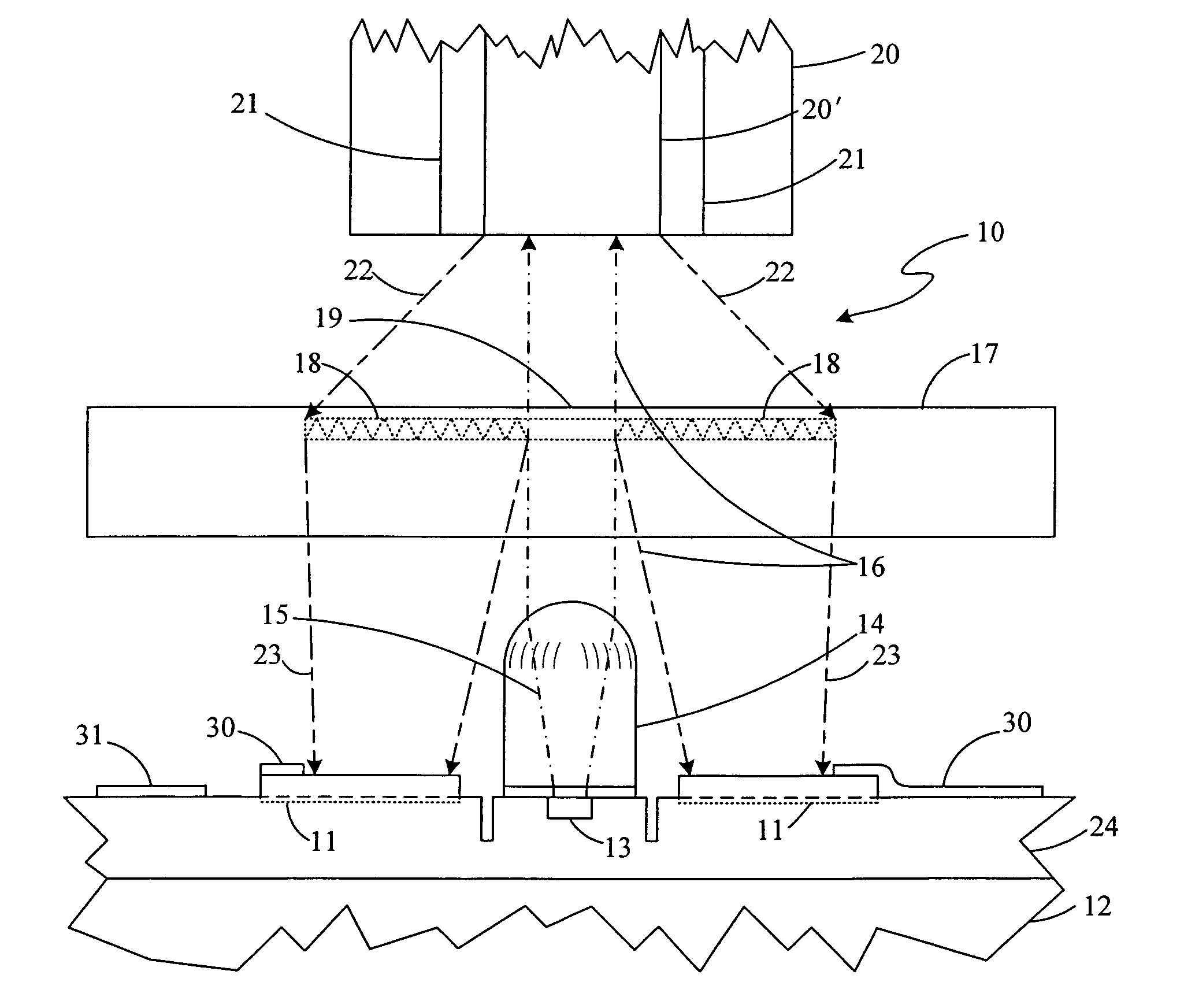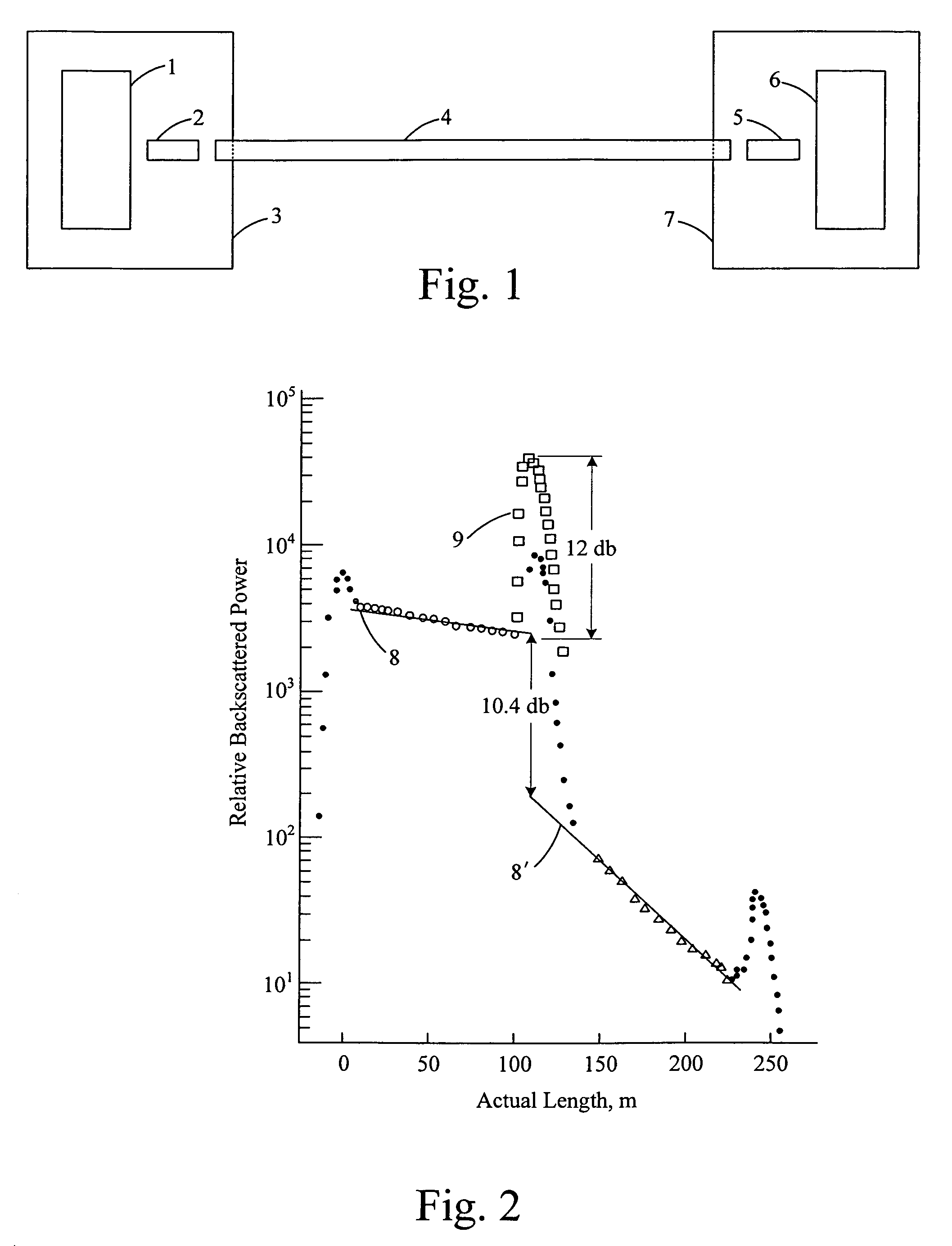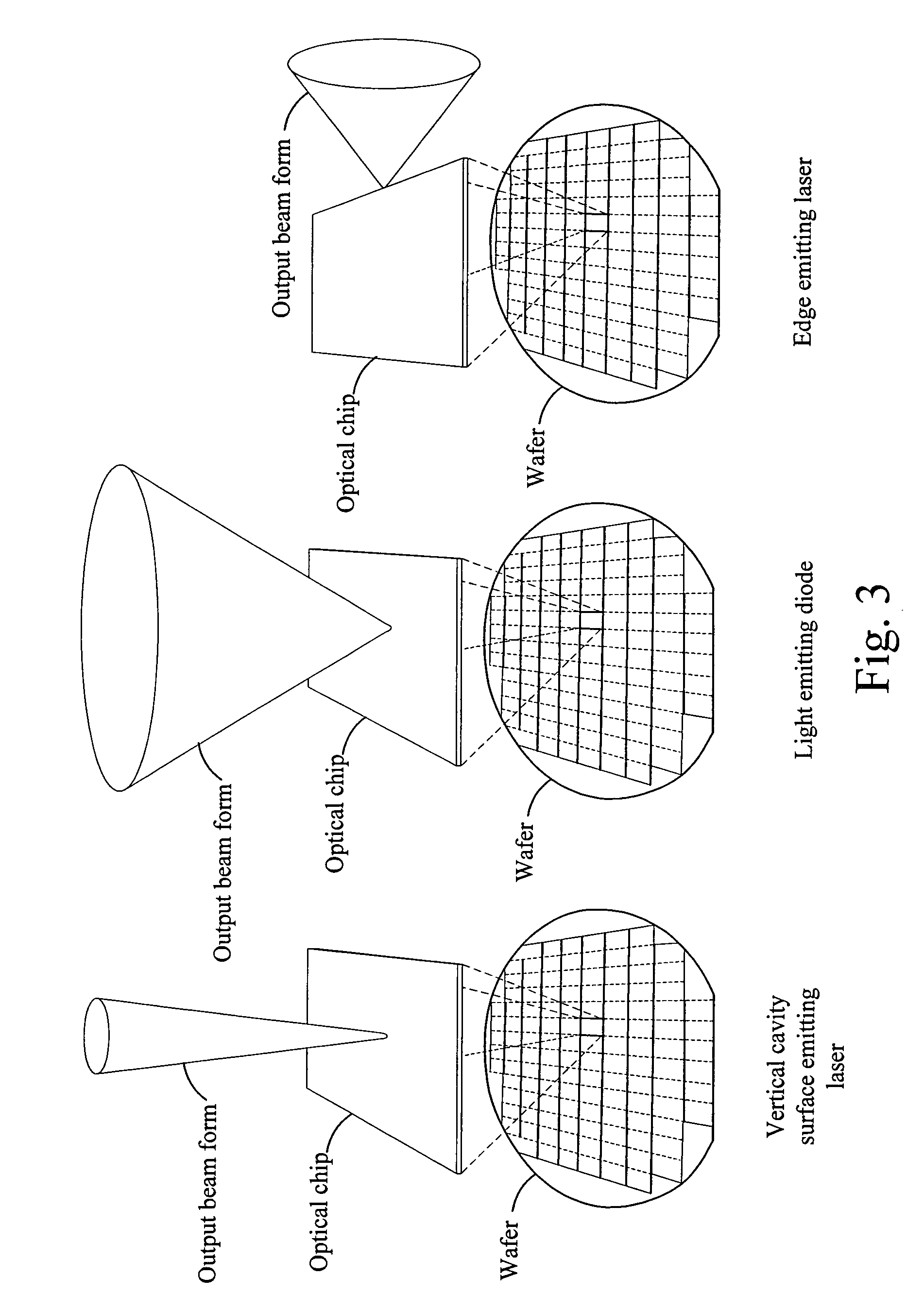Bidirectional optical fiber link systems component couplers
a technology of bidirectional optical fiber and component coupler, which is applied in the direction of optics, optical light guides, instruments, etc., can solve the problems of fiber breakage, reduced service life of optical fiber, and limited range of optical fibers located on the edge of printed circuit board based systems
- Summary
- Abstract
- Description
- Claims
- Application Information
AI Technical Summary
Benefits of technology
Problems solved by technology
Method used
Image
Examples
Embodiment Construction
[0045]An embodiment of the present invention as a combined laser and photodetector transceiver optical portion structure, 10, is shown schematically in a side view in FIG. 6. A photodetector, 11, is integrally formed at a major surface of an optoelectronic monolithic integrated circuit chip, 12, that also has a vertical cavity surface emitting laser (VCSEL), 13, integrally formed at that surface such that photodetector 11 partially surrounds VCSEL 13 at that surface. Photodetector 11 can alternatively be a p-i-n photodiode, an MSM (metal-semiconductor-metal) device, an avalanche photodiode, or a resonant cavity photodiode.
[0046]Also formed on optoelectronic chip 12 is a collimating lens, 14, that covers VCSEL 13 but leaves uncovered the active radiation detecting area in the major surface of photodetector 11. Collimating lens 14 redirects the initial radiation beam portion, 15, emitted from VCSEL 13, a beam portion that diverges as emitted, into a collimated or even somewhat converg...
PUM
 Login to View More
Login to View More Abstract
Description
Claims
Application Information
 Login to View More
Login to View More - R&D
- Intellectual Property
- Life Sciences
- Materials
- Tech Scout
- Unparalleled Data Quality
- Higher Quality Content
- 60% Fewer Hallucinations
Browse by: Latest US Patents, China's latest patents, Technical Efficacy Thesaurus, Application Domain, Technology Topic, Popular Technical Reports.
© 2025 PatSnap. All rights reserved.Legal|Privacy policy|Modern Slavery Act Transparency Statement|Sitemap|About US| Contact US: help@patsnap.com



